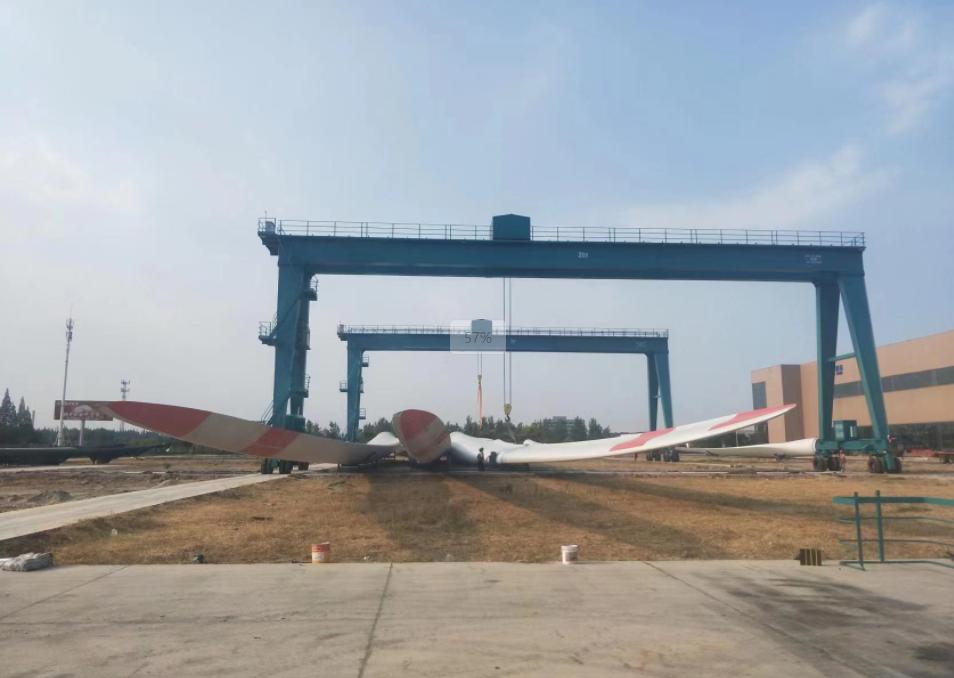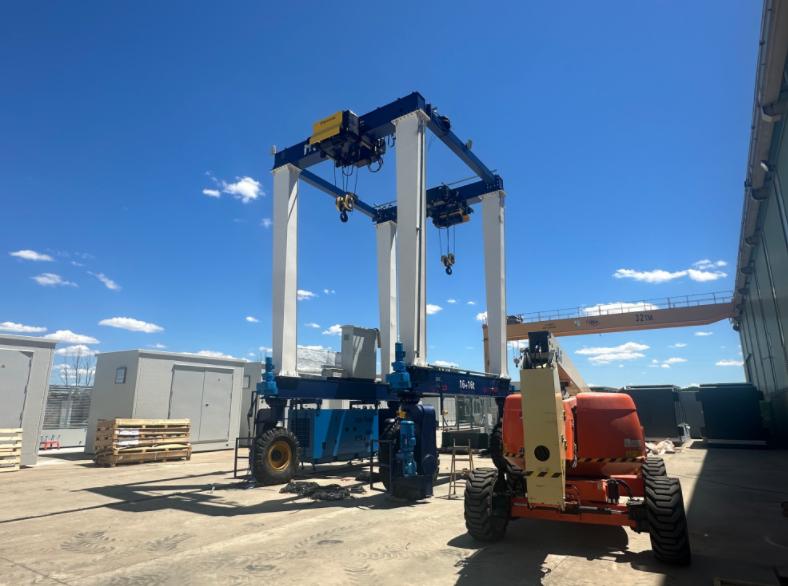Role of Gantry Cranes in the Renewable Energy Sector
The global transition toward sustainable and low-carbon energy sources is driving rapid growth in the renewable energy sector. From wind farms and solar power plants to hydroelectric and bioenergy facilities, the demand for heavy-duty, reliable lifting equipment has never been greater. One critical piece of machinery enabling this growth is the gantry crane - a versatile lifting solution widely used in manufacturing, transportation, installation, and maintenance within the renewable energy industry.
Gantry cranes provide essential support in the handling and positioning of large, heavy, and complex components that are common in renewable energy systems. Their ability to lift loads with high precision, cover large working areas, and adapt to a variety of environments makes them a vital part of the green energy infrastructure.

Overview of Gantry Cranes
Gantry cranes are overhead lifting systems supported by freestanding legs that run on rails or rubber tyres (RTG cranes). They can range in size from light-duty indoor models to massive outdoor cranes with capacities exceeding several hundred tons.
Key features that make gantry cranes ideal for renewable energy applications include:
- High lifting capacity for heavy components such as wind turbine nacelles or hydro generator parts.
- Large spans and lifting heights suitable for oversized equipment.
- Customizability to fit specific tasks or site layouts.
- Precision controls for safe and accurate load handling.
Applications in the Renewable Energy Sector
1. Wind Energy
Wind turbines are among the largest renewable energy structures, with components such as blades, nacelles, and towers weighing tens of tons and requiring meticulous handling.
Manufacturing and Assembly
- Gantry cranes are used in factories to handle wind turbine blades, which can exceed 80 meters in length.
- In nacelle assembly lines, gantry cranes lift gearboxes, generators, and housings, often using dual-hoist systems for even weight distribution.
Transportation and Storage
- At logistics hubs and ports, gantry cranes assist in loading and unloading turbine components from ships, trucks, or trains.
- Outdoor gantries are often used in staging areas to move and align blades or towers before installation.
Installation Support
- Onshore wind farms may use mobile gantry cranes for pre-assembly of components before final installation with larger erection cranes.
- Gantry cranes also aid in replacement or repair of large components during maintenance operations.
2. Solar Energy
Although individual solar panels are relatively light, utility-scale solar projects involve thousands of units and supporting structures that require efficient material handling.
Panel Manufacturing
- In production facilities, gantry cranes transport solar panel glass sheets, frames, and modules between workstations or storage areas.
- Automated gantry systems can improve throughput and reduce handling time.
Structure Assembly
- Gantry cranes assist in assembling and positioning support frames, tracking systems, or pre-assembled panel arrays in solar farms.
- For floating solar farms, gantry cranes are used to assemble and launch buoyant structures into water bodies.

3. Hydropower
Hydropower plants use turbines, generators, and large valves - many of which require heavy lifting during installation and maintenance.
Turbine Assembly and Maintenance
- Gantry cranes handle runner blades, generator stators, and rotor assemblies in hydro plant workshops.
- For dam construction or rehabilitation, large gantry cranes are used to position gate hoists, spillway components, and other infrastructure.
Trash Rack and Gate Handling
- Gantry cranes mounted on dam structures are used to lift and remove trash racks, open sluice gates, or install stoplogs during maintenance or flood control.
4. Biomass and Waste-to-Energy Facilities
In facilities where organic waste or biomass is converted into energy, gantry cranes are used to manage heavy processing equipment and bulk materials.
- Handling feedstock storage bins, grate furnaces, or steam turbine components.
- Loading and unloading biomass feedstock or ash removal from storage pits.
Advantages of Using Gantry Cranes in Renewable Energy Projects
1. High Load Capacity and Reach
- Gantry cranes can be engineered to handle exceptionally heavy and large components - critical for industries like wind and hydro where parts weigh up to several hundred tons.
2. On-Site Versatility
- Mobile gantry cranes, particularly rubber tyred models, can move across open sites, maneuver around obstacles, and serve multiple lifting points.
3. Efficiency in Production and Installation
- Gantry cranes facilitate streamlined production by moving components between manufacturing stations or storage yards.
- During installation, they reduce reliance on multiple mobile cranes, cutting down on setup time and labor costs.
4. Reduced Risk of Damage
- With precision control systems, gantry cranes can handle delicate or expensive equipment with minimal risk of impact or mishandling.
5. Adaptability and Customization
- Gantry cranes can be custom-built to specific span, height, and lifting requirements, and integrated with features like:
- Anti-sway systems
- Load monitoring sensors
- Multiple hoists for tandem lifts
- Remote or cabin control
- Automation for repetitive lifting tasks
Key Design Considerations
To ensure optimal performance and safety in renewable energy applications, several design aspects must be considered:
1. Outdoor Weather Resistance
- Cranes operating at wind farms, dams, or solar sites need weatherproof enclosures, corrosion-resistant coatings, and storm locks to withstand extreme environments.
2. Ground and Mobility Conditions
- Rubber tyred gantries are ideal for sites without fixed infrastructure, while rail-mounted versions offer better stability for heavy lifts in controlled areas.
3. Environmental Compliance
- Many renewable energy projects are built with sustainability in mind, so cranes may feature electric or hybrid power systems to reduce emissions.
4. Safety and Compliance Standards
- Cranes must comply with local and international lifting standards (such as ISO, FEM, OSHA) and incorporate features like:
- Emergency stop systems
- Overload protection
- Travel limit switches
- Audible and visual alerts
Case Study: Wind Turbine Blade Handling in Europe
A major wind turbine manufacturer in Germany uses customized double girder gantry cranes with tandem hoists to handle 85-meter turbine blades. The cranes operate in both indoor assembly halls and outdoor storage areas.
- Load capacities exceed 50 tons.
- Specialized slings and spreader bars are used to prevent blade deformation.
- The cranes feature automated travel paths and anti-sway systems for safe, hands-free transport.
This setup has improved production efficiency by 30% and reduced damage incidents significantly.
Conclusion
As the renewable energy sector continues to expand, the role of gantry cranes becomes increasingly central. Their ability to handle large, heavy, and sensitive components with precision and efficiency supports every stage of the renewable energy lifecycle - from manufacturing to installation and long-term maintenance.
By investing in tailored gantry crane solutions, companies in the wind, solar, hydro, and biomass industries can enhance safety, reduce costs, and accelerate project timelines. In doing so, gantry cranes are not just supporting renewable energy - they are helping build a cleaner, more sustainable future.